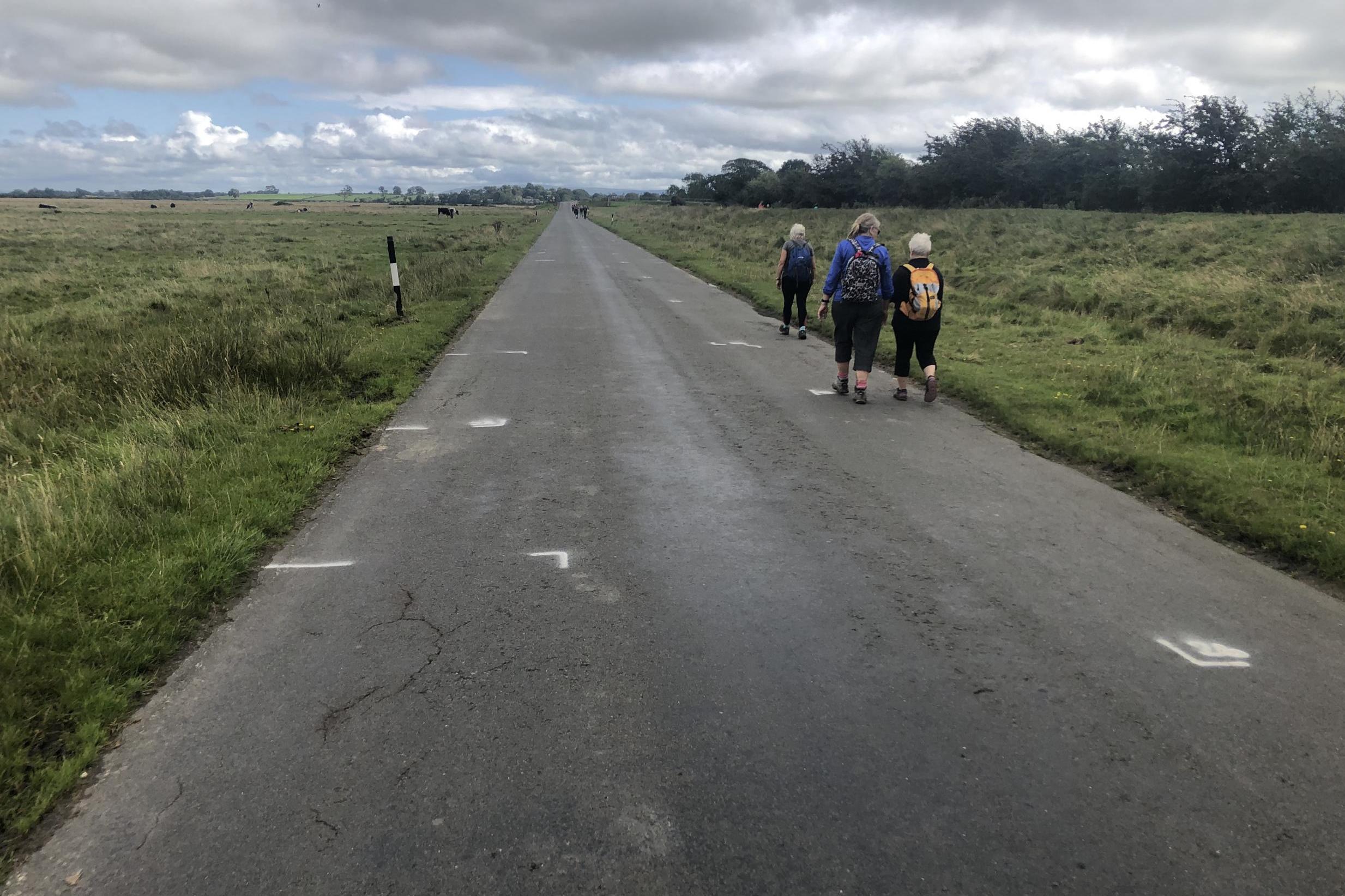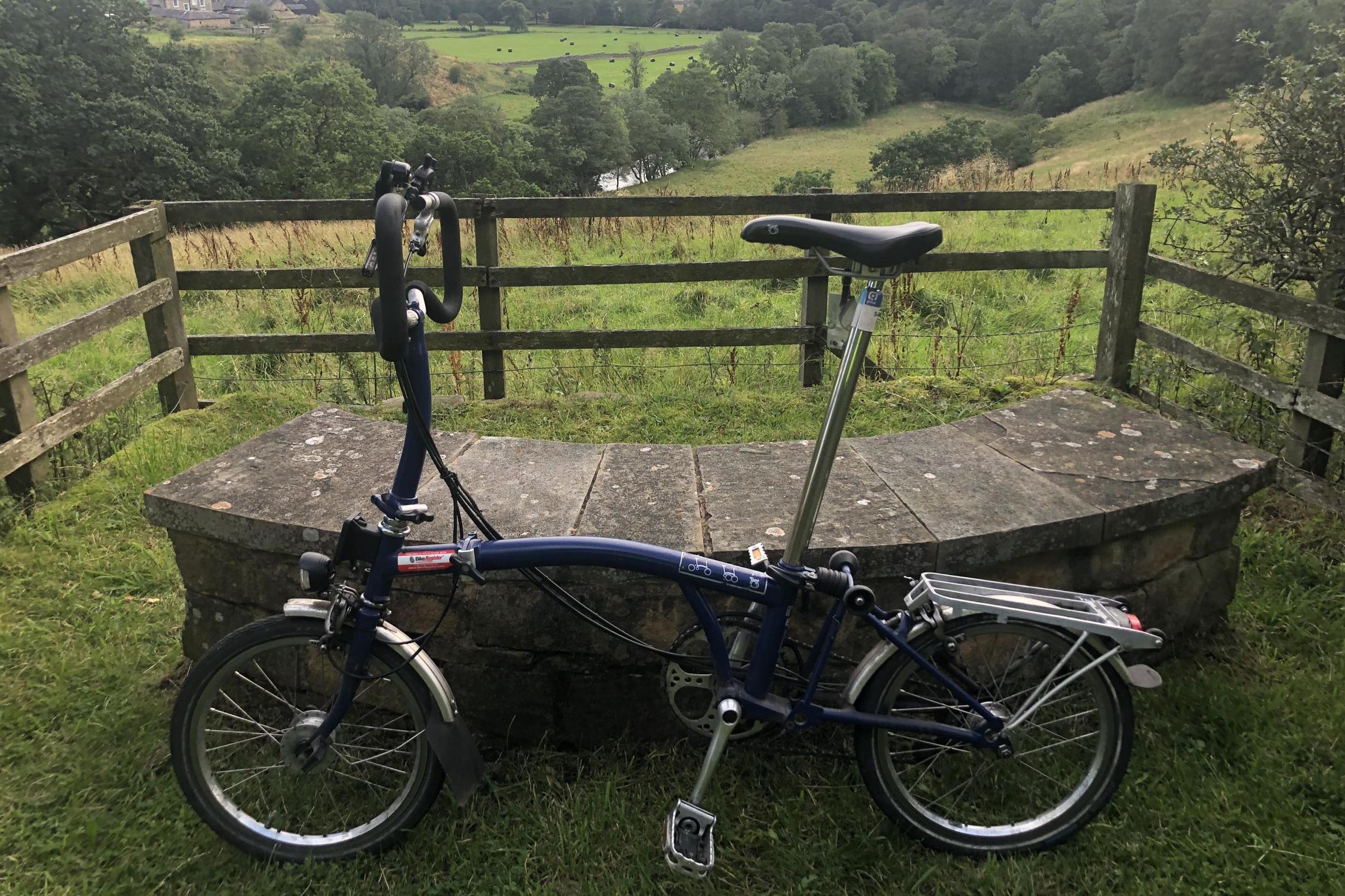The joys of cycling into the centre of Britain
Seven adventures in seven days: Cycling to the centre of Britain
Your support helps us to tell the story
From reproductive rights to climate change to Big Tech, The Independent is on the ground when the story is developing. Whether it's investigating the financials of Elon Musk's pro-Trump PAC or producing our latest documentary, 'The A Word', which shines a light on the American women fighting for reproductive rights, we know how important it is to parse out the facts from the messaging.
At such a critical moment in US history, we need reporters on the ground. Your donation allows us to keep sending journalists to speak to both sides of the story.
The Independent is trusted by Americans across the entire political spectrum. And unlike many other quality news outlets, we choose not to lock Americans out of our reporting and analysis with paywalls. We believe quality journalism should be available to everyone, paid for by those who can afford it.
Your support makes all the difference.Our travel correspondent is making the most of the UK in August by taking on a challenge a day. Today: across Cumbria and Northumberland. Slowly.
Had you been following my progress in trying to enjoy seven adventure in seven days, you might have seen a pattern start to emerge, most easily summed up as: over-ambition and under-achievement.
On Monday, for example, not only did I fail by some hours to hitchhike across Wales faster than the train from Cardiff; I also construed to arrive at Holyhead one minute after my intended ferry to Dublin had sailed.
Friday’s adventure was billed as: “Is it possible to cycle from the Irish Sea to the North Sea in a single day ... on a folding bike?” My aim was a coast-to-coast journey on my Brompton.
I calculated that 84 miles was just about feasible. You need not be Geraint Thomas to manage 12mph on a bicycle, which neatly works out at seven hours.
Even allowing for some steep climbs for which this city bike is not designed, and refuelling stops for tea and cake, I thought I could make the Newcastle suburb where Hadrian’s Wall reaches a conclusion.
How I wish I had instead offered: “Cycling to the centre of Britain.” Because that is where, inadvertently, I ended up.
The cycle ride to Wallsend is paved with good intentions. The official start of the Hadrian’s Wall Path National Trail is in the village of Bowness-on-Solway. The village occupies the site of a Roman fort that helped guard the frontier marking the edge of the empire.
A planned archaeological dig may soon reveal that this was actually the location for the biggest fort on the entire wall. For now, though, you can reflect on events since AD122 at the pavilion where the trail begins: a location called The Banks.
You gaze across the tidal flats at Scotland. Online maps often suggest to people on the Cumbrian side of the water that the nearest pub or petrol station is just a mile or two away, when in fact it is an hour’s drive via Carlisle.
In 1869, the longest bridge in Europe was built across the estuary, connecting Bowness with Annan in Scotland. But with 12 years an extreme winter saw it damaged by actual icebergs, and by 1935 it was demolished.
Still, some locals say it is possible to walk north across the Solway Firth at low tide. Sea-to-sea hikers and bikers, though, head east. I met Spike and his dog, Dora, who were setting off on a week’s hike.
I’d like to say that I wished them Fortuna vobis adsit – “Good luck go with you.” But I read the inscription on the pavilion only after they had set off on their six combined legs.
Fortune deserted Edward I, “the Hammer of the Scots,” who died at Burgh-by-Sands, halfway between Bowness and Carlisle while leading a campaign against Robert the Bruce.
A Hollywood-style statue of the late monarch, clasping a sword in one hand and a crown in the other, guards the village playing field. On the long trudge to Carlisle, this is what passes for entertainment.

Dozens of hikers followed the road to the city, their spirits dimmed by the absence of any sign of actual Wall or half-decent scenery. Yet a treat awaited them. The trail cuts between the Castle and the Tullie House Museum.
Unless you are five or younger, you will have seen plenty of castles that look quite like Carlisle’s. But whatever your age, Tullie House, should astonish you. It is a Jacobean mansion that became the city’s Institute of Science, Literature and Art. Today, it has a dazzling pre-Raphaelite collection, plus some classic Arts and Crafts textile design by William Morris.
The Arts and Crafts movement shows up again eight miles further east along the road, in Brampton – a market town whose crowning glory is St Martin’s Church.
I was heartened to read, on the front page of the Cumbrian church newsletter, “Armed Robber turned Vicar,” celebrating the reformed Reverend Matt Martinson.
Equally impressive: a church that is a shrine to late 19th-century British art. The stained-glass windows were created by Edward Burne Jones and fashioned in William Morris’s workshop in London. They are exquisitely of their age, with the light of late August shining through the figures of Hope, Charity and Faith.
Hope of reaching the other side of Britain was dwindling. The distractions along the way had slowed me down, and Brampton was proving a gem. Chains are almost non-existent, and pride of retailing place goes to Cranston’s Food Hall.
You can judge a location by the quality of its tourist office and at Brampton it occupies a strange and wonderful octagonal structure called the Moot Hall.
I asked a passer-by how I could find the place; she gestured in the right direction with a moot point. (I’m here all week.)
Unfounded optimism meant I was way behind schedule, and loving every minute. Cumbria is a county where art and nature are beautifully entwined.
For all the hope I had of reaching Wallsend and the North Sea, I might as well have set the controls for the heart of the sun.

Furthermore, I was on the edge of Northumberland, and revelling in the high-altitude ridge on which Hadrian’s engineers created their enduring masterpiece. The barrier that signalled where the emperor’s appetite for empire ended, and the wild northlands began, is increasingly intact and engrossing as you head east.
The views become ever more spectacular as the Wall and the accompanying road climb towards the sky – with heavenly views across deep valleys draped in the greens and golds of late summer. It is a scene of tranquillity the Romans might recognise.
By now, though, the gloom was gathering. Time to change course and insist I had been heading for the heart of Britain all along.

In the 17th-century Manor Inn in the middle of Haltwhistle, they are playing “We built this city on rock’n’roll”.
They actually built this village on the edge of the Roman empire. And as enterprises from the Heart of Britain Launderette to the Heart of Britain Army Surplus Store will testify, there is nothing marginal about Haltwhistle.
This amiable community claims to be the geographical centre of the UK, excluding Northern Ireland. You may wish to challenge their working, but they insist that when you calculate the intersection of Shetland to Scilly and Durness to Dover, it passes through the heart of Haltwhistle.
Hadrian’s Wall wasn’t built in a day, and attempting to parallel it in a day is a fool’s errand. But sometimes failure can bring a kind of success: travel, like life, is a succession of moments, and yesterday’s miracles are now etched on my memory.
Tomorrow: in his final adventure, Simon Calder walks across the sands of Morecambe Bay. Possibly.

Join our commenting forum
Join thought-provoking conversations, follow other Independent readers and see their replies
Comments